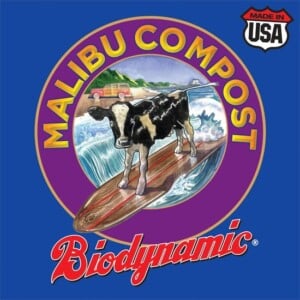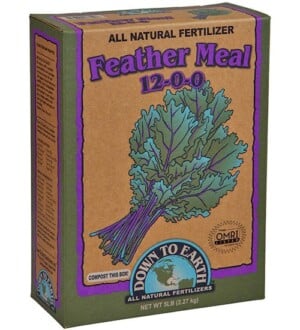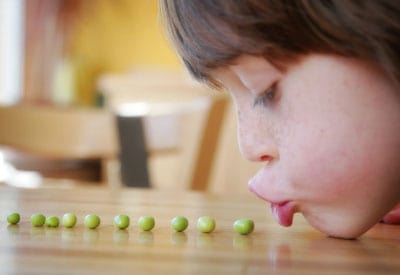Troubleshooting
Something not right in the pile? We’ve got the answers to common composting problems.


#1 Worm Bin
(Free Shipping)
Can O Worms
A quick, odorless and space efficient way to recycle scraps and peelings -- year round!
$144.95Learn moreComposting isn’t an exacting science. It happens naturally in our backyard heaps, just as it does on every forest and prairie floor. While maintaining ideal temperatures in a bin or pile takes some attention, the problems that arise when making compost are few and the solutions are many. Here, for when needed, are the problem solvers.
Convert kitchen, yard and garden waste into soil-nourishing organic matter with our backyard tested compost bins, tumblers and supplies. Decreasing household waste and building your soil has never been so easy!
Odors
If a compost pile smells, something is wrong. Ordinarily, composting does not smell. Mostly two sorts of smells — rot and ammonia — afflict a pile, and since these have clear and distinct causes, they’re actually quite easy to diagnose and treat.
Rotten Smells
A compost pile that smells like rotten eggs or rotting vegetables has gone anaerobic. This means that there is not enough oxygen to support aerobic microbes and the anaerobic ones have taken over. Unfortunately, they produce hydrogen sulfide as a by-product and hydrogen sulfide smells like rotten eggs.
The solution is simple: turn the pile. This may be unpleasant since it requires that you get up close with the odiferous heap. But it’s well worth it. Rebuild your turned pile on a palette to promote bottom-up air flow. Or work some large sticks into the middle the middle of the heap to give it support. If the pile keeps reverting to an anaerobic mode, it’s time to explore different ingredient ratios or composting styles. Some methods including sheet composting don’t let too much of the wrong materials build up and begin to smell. The trench composting method smothers odors by moving the process underground.
Ammonia
Compost piles smell like ammonia when they give off excess nitrogen (N) in the form of ammonia (NH3). This problem occurs most often if a composter has been adding high-nitrogen products. The smell signals that the pile has a surplus of nitrogen from too many green materials.
The short-term solution is to turn the pile or even spread it out to allow the excess ammonia to vaporize. Mixing in brown material can also restore the carbon-nitrogen balance. The long-term lesson is restore the carbon-nitrogen balance. Increase carbon or brown materials, by adding straw, sawdust, peanut shells, or shredded, unbleached or colored cardboard to the pile. Mix them in well. In the futures, add less nitrogen.

KEEP IT COOKING!
Compost Thermometer
Keep your pile cooking with this 20-inch long, stainless steel thermometer.
$29.95Learn moreHow hot is your pile? The REOTEMP® Compost Thermometer is ideally suited for measuring the core temperature of a bin or pile. Includes an easy-to-read dial, with three important temperature zones, and a 20-inch stem to reach the center of the pile.
The Pile Won’t Heat Up
You heard about hot compost piles, maybe even seen one. But yours never does. Why? Is the hot pile a myth? No. But it takes some planning and effort to achieve. Supply all the conditions and ingredients it needs and the heat will be on.
Old, Unmaintained Piles
First off, it’s important to realize that only a freshly built or freshly turned pile will get hot. Continuous piles — unmaintained heaps that get new stuff added to them continually over the year — will not heat up. There may not be enough nitrogen. The oxygen supply at the bottom may have been depleted over time. Even if the carbon-nitrogen and moisture balance in the new material is perfect there may not be enough of it, depending on the size of the original heap, to support the mass of microbes needed to create a hot pile.
There are two ways to heat up such a pile: add an enormous amount of new material on top, or turn it. The first solution is equivalent to building a new pile on top of the old one, but building it with an eye to heat. As the new material heats up and is turned into the rest of the pile it will raise the temperature of the old material as well.
The second method, simply turning the pile, may be all it takes. But if it’s either too wet or too dry, or if it lacks nitrogen throughout, you can turn and turn and the thing will still not heat up. If moisture drips out when you squeeze a handful of material, it’s too wet. You can spread it out to speed evaporation, you can turn daily, or you can just wait for dry summer weather. If the material doesn’t look and feel damp, it’s too dry. Water it.
If you’re fairly sure that moisture isn’t the problem, try adding nitrogen. This is best done when you turn it as you can incorporate grass clippings or corn gluten meal or blood meal here and there, ensuring an even distribution.
Converting a cool pile to a hot one takes some work — but it can be done.
Newly Built Piles
You build what’s supposed to be a hot pile. You wait and … you wait. The stuff settles a bit over the first week and then just sits there. The thermometer you stick in it barely moves. What’s the problem?
There are several possibilities. Lack of moisture, nitrogen, oxygen or micro-organisms will all cause the composting process to stall out. The real problem is figuring out which item is missing from your pile.
Size: Below a certain size (a certain surface-to-volume ratio), piles won’t really heat up. If your pile contains less than about a cubic yard of material, it probably won’t heat up. Make sure the area where it rests measures at least 3′ by 3′ and that it’s at least three feet high when first assembled.

FAST & EFFICIENT
Aerator (ICA-36)
An easy and effective way to mix and add oxygen to the pile without heavy lifting.
$29.95Learn moreThe Yard Butler® Compost Aerator makes it easy to mix the pile without heavy lifting. Includes folding wings that harpoon directly into the pile, opening when withdrawn. Use to circulate materials, introduce oxygen and promote faster decomposition.
Oxygen: If it’s a new pile, the problem isn’t likely to be a lack of oxygen unless you packed the pile down and ran your tractor over it. The exception would be if it contains large clumps or layers of material like leaves, sawdust or grass clippings that tend to form dense mats.
Dead leaves compost slowly under any conditions because they’re so high in carbon. If they’re not mixed with other ingredients, they’ll compress into a nearly oxygen-free lump. So will grass clippings, which will quickly go anaerobic, turning slimy and stinky. In both cases, it’s best to turn the pile, mixing these ingredients in with others. When adding new materials, don’t leave them in a clump but mix them in throughout the pile. Using leaves? Shred them.
Moisture: If you don’t have big clumps of leaves or grass in your pile, then exploratory surgery is necessary. Get out a pair of gardening gloves and dig into the pile a ways in several places. Does it seem damp? If not, add water. Actually stick the hose into the pile — again, in several places, not just one — and let it run for thirty seconds or so, then sprinkle the top liberally. Check it each day for a while to be sure you’ve added enough.
Too much moisture can also put a damper on hot composting. But this isn’t very likely with a newly built pile. New piles usually contain plenty of air pockets and their ingredients don’t absorb water nearly as well as does finished compost or even partly composted material. If you think this might be the problem, check the solution below under “Old, Maintained Piles.”
Nitrogen: If the pile still doesn’t heat up in the next three to four days, you’ve probably got a nitrogen deficiency and this, unfortunately, may mean that you’ll need to rebuild the pile, incorporating a high-nitrogen material throughout. An alternative would be to sprinkle such a substance — blood meal, organic cottonseed meal, kelp or manure — on the pile and water it in. It won’t distribute evenly, but it should help. And when you turn the pile the booster will get mixed throughout.

A BESTSELLER!
Compost Maker
A proprietary blend of microorganisms used to break down kitchen and yard waste.
$9.95Learn moreExpect rich, moist humus in 60-90 days! Ringer® Compost Plus contains a proprietary blend of microorganisms which break down yard waste as well as a nutrient energy source for a fast start. Two pound box converts 500-750 lbs. of yard waste into mulch. Recharges cool piles, too!
Micro-Organisms: If you know you added plenty of green stuff — for instance, the pile is a quarter grass clippings and they’re well dispersed, not concentrated — then you’re down to the last possibility: not enough micro-organisms. This is a rare and usually self-correcting problem, but one circumstance does make it more likely. If you isolate the pile from the ground, the microbes that live in the earth have no way up into your heap. Occasionally someone will have the bright idea of building a compost pile on a sheet of plastic, often with the aim of making distribution easier, sometimes with the goal of collecting the leachate — the liquid that seeps out. It’s a great idea as far as it goes, but it cuts the pile off from its primary source of micro-organisms: the dirt beneath it.
Once you’ve eliminated all other possible causes of a slow-starting pile, try boosting the population of micro-organisms. This can be done by adding some fresh finished compost, which should be rich in microbes. For quick results, buy an inoculant which is actually the micro-organisms themselves, dry but almost undiluted. Ordinary dirt contains composting bacteria. Adding some will introduce the organisms, but not as effectively as adding compost or inoculant. (There’s some disagreement in the composting world about the value of dirt in a compost pile; finished compost. if you have it, is a better choice.)
In all cases, turning the pile and mixing in the new microbe source gets the best results. In a pinch, sprinkle it on top and water thoroughly. And plan ahead for future batches: add micro-organisms, finished (but fresh) compost, or thin layers of soil to your piles as you’re building them to ensure that they’ve got adequate supplies of the bacteria that do the composting job.
|
Problem
|
Symptom
|
Solution
|
To Avoid in Future
|
| Lack of moisture | Feels, looks dry | Add water | Water pile as it’s being built, after every two to four inches of new material. |
| Lack of oxygen | Matted ingredients; large quantities of leaves, sawdust or grass added in clumps | Add oxygen: Turn pile, or fluff. | Mix ingredients well when building, esp. those that tend to mat. |
| Lack of nitrogen | Pile doesn’t heat up; slow decay | Add high-nitrogen material: blood meal, organic cottonseed meal, corn gluten meal. | Sprinkle high-nitrogen material over every 2-4 inches of new material as pile accumulates. |
| Lack of micro-organisms | None of the other factors apply; pile still doesn’t heat up. | Add micro-organisms directly (inoculant) or indirectly (fresh compost, soil). | Don’t build piles on plastic sheets; don’t isolate piles from the ground; save some fresh compost from finished pile to incorporate into new pile; add micro-organisms to new piles. |
Old, Maintained Piles
This is a pile that was built to get hot and maybe did so once, but now it’s cold and unfinished. Most of the possible causes that apply to Newly Built Piles (above), still apply here.
Oxygen: With piles that have only heated up once or twice, start by turning the pile to introduce new oxygen. If this gets no results, then check the moisture level and add water if necessary. A lot of piles stall out because they dry out.
Moisture: New piles are seldom so wet that moisture impedes microbial activity. Older piles, especially ones left open to the weather in a rainy season, may develop problems from too much moisture. Water can fill the gaps and spaces inside your pile, driving out the oxygen aerobic bacteria need.
Turn the pile, incorporating plenty of hay, dry leaves or other dry, absorbent material as you do. Be aware, though, that all of these materials add far more carbon than nitrogen so you might need to add a nitrogen source to keep the C/N balance. If you don’t have any dry ingredients that fit the bill, you might have to spread the compost out to dry.
To prevent this problem from recurring, fashion some sort of lid for your compost pile, even if it’s only a tarp during rainy weather.
Microbes: One problem that’s unlikely to afflict an older pile is a lack of microbes. If a pile has heated up even once, it’s got plenty of microbes in it. The population doesn’t die off. But it never hurts to add finished compost to a cold pile, if only to encourage the microbes already there.

Nitrogen: This one is unlikely. A pile that has enough nitrogen to get truly hot once usually has enough to last out the entire composting process. But there may be the occasional exception. If it’s heated up once or twice but won’t heat up after turning and it’s neither too dry nor two wet, then try turning it again. Introduce nitrogen throughout as you turn.
The most cheerful addition to the list is the possibility that the compost is done. If it’s performed like a champion for several weeks or months, heating up whenever you turn it, but now the temperature doesn’t budge even when you fork it over, then this is most likely the answer. If it look, smells and feels like soil or compost, then it’s done. Screen whatever remaining materials, twigs and the like, out of it before using. Though it can be used at once, it’s best left to cure for a week or two.
Overheating
How can this be a problem? By killing off the very reason that compost is so effective; the beneficial microbes. At temperatures above 160°F (71°C) or so, beneficial micro-organisms begin to die off. Adding this compost to your soil will quite simply not be as beneficial as it would be otherwise. In fact, the extension service at the University of Illinois warns that at temperatures this high, “the composting material may become sterile and lose its disease fighting properties.” Those properties, after all, come to us courtesy of bacteria. Kill the bacteria and you kill off any chance for antibiotic action as well.
Unless you have a thermometer in the pile, you probably won’t know if it heats up over 140°F (60°C). It’s next to impossible to tell by hand the difference between 140°, which is optimal, and 160°F (71°C), which is getting close to a temperature which will kill off beneficial organisms. A compost thermometer is a good investment.
Commercial and municipal composting systems actually aim for these very high temperatures to ensure that pathogens are killed off, but they’re not practical for the home composter. Assuming that your pile is free of pet and human feces or other sources of human pathogens, it’s best to keep composting temperatures below 155°F (68°C).

CONTAINS NO GMOS
Bu's Blend Biodynamic
Contains NO GMOs, pathogens, growth hormones, or synthetic anything!
$19.95Learn moreGo beyond organic with Malibu Compost Biodynamic. This extremely popular soil builder is handcrafted using only quality ingredients and is Demeter-certified Biodynamic®, the highest agricultural standard in the world. Use to nourish soil-inhabiting organisms, save water, and improve clay, compacted, or otherwise poor soils. Does NOT contain sewage sludge or biosolids.
“I Need It Now!”
Most gardeners have run into a compost crisis: a realization that the pile on hand is just not going to produce what’s needed fast enough. Will you go without or be forced to purchase commercial compost? (If so, make sure it’s dependable and organic.) Sometimes — not always — it’s possible to hurry a pile along.
First, the “not always” conditions. A hot pile already operating at maximum capacity cannot be sped up. If the compost thermometer reads 150°F (65.5°C), raising the temperature risks killing off many of the organisms that make compost valuable. Secondly, if you need your finished compost tomorrow or even next week, you’re out of luck; it’s time to hit the gardening center. Third, if your pile is completely saturated with water, it’s probably not possible to both dry it out and compost it within the time available. Finally, if you don’t have enough material on hand for at least a 3′ by 3′ pile, you’ll have to wait until you do.
However, if you’ve got a partially composted pile of reasonable dimensions and three to six weeks to work with, then many things are possible. The further along your pile already is and the more material you’ve got to work with (within reason) the better. Specifically, it is possible to convert a cool continuous pile into a hot batch pile.
For emergency actions, it’s a good idea to have on hand a couple of compost boosters such as a nitrogen source and a compost additive to add additional microbes. A pair of gloves, always a good idea when handling immature compost, will be especially welcome in the following exercise as some of the ingredients are sure to be slimy.
The basic plan here is to clean out the bin and rebuild it using the most effective new-pile building techniques. Even if you don’t usually chop up ingredients, this would be the time to do so. A hoe, turf edger or sharp-edged shovel can accomplish a great deal. A pair of clippers might come in handy as well. A shredder is particularly effective on materials dry enough (like leaves) that it will accommodate. Anything that resists chopping or shredding, like twigs, corn stalks, or nut shells, should be saved or moved to another, less urgent pile.
New material that’s high in nitrogen and quick to decompose should be welcomed. This includes fresh leaves and grass trimmings as well as soft kitchen waste: plums, peaches or potatoes past their prime, but not carrot ends, peanut shells or cantaloupe peels.

IT'S ORGANIC!
Feather Meal (12-0-0)
Made from hydrolyzed and ground feathers collected from the poultry industry.
$12.95Learn moreWaste not, want not! Down To Earth® Feather Meal Fertilizer is a by-product collected from the poultry industry and transformed into a nitrogen-rich soil additive. Feathers are heat treated and then ground into a powdered soil amendment.
Before you return material to the bin, create an open airspace at the bottom by laying down sticks, a wood pallet, or even a layer of wood chips or pine cones. This will allow continuous aeration from below which will reduce the need for turning.
After you’ve pulled everything out, chopped as much as you can, and added new material, rake it all together and mix it up with a garden or pitch fork. Bunches of leaves or matted grass need to be shaken up and mixed with other things. Use dirt only if nothing else is available. If you’re working on a tarp, you can sprinkle the feedstock with some of the nitrogen and dry activators as you work.
When the material is well mixed, put down a six-inch layer in the bin and sprinkle it with nitrogen and microbes unless, of course, you’ve already added all the boosters that the directions recommend. Also sprinkle with water if needed, remembering that feedstock should be damp, not wet. Repeat until the bin is full. Sprinkle the top with boosters and with an inch or two of soil or mature compost or several inches of hay.
Poke holes in the pile with a piece of rebar — lots of holes, spacing them three to six inches apart. If they’re not there the next day, do it again. These holes provide aeration channels, drawing air up from the bottom of the pile.
If your bin doesn’t have a lid, figure out some way to protect the compost from rain. Rain will cool the pile down; it can also saturate it, which slows or halts aerobic activity. Suspend a tarp over the pile to act as a lid, keeping it away from the sides of the bin so that it doesn’t impede air circulation.
A pile given this kind of kick-start will get very hot, and it will get hot fast. It’s a good idea to work with a thermometer to guard against overheating. If the temperature starts to rise too high (over 150 degrees), poke holes in the pile with a piece of rebar or pull off the top foot of material to allow the heap to let off some steam. Use the thermometer to determine when to replace the material you removed.
To keep a pile cooking at maximum speed, turn it as soon as the temperature drops to about a hundred degrees. This is only a few degrees warmer than your body, so the inside of a pile at this temperature will feel only slightly warm. Keep turning it every time it cools down. It’s fine to turn it a little sooner — at about 110°, for instance — but above that you’re creating more problems than you’re solving.
Fruit Flies & Fungus Gnats
Most piles have a few fruit flies and fungus gnats. If they don’t bother you, they’re not hurting the pile. But don’t let them get out of hand. Fungus gnats can do damage to your plants, especially the roots, and can spread to your garden when you apply finished compost. Worse, if you add the compost to the potting soil of indoor plants, it can start an infestation inside your home. It’s a good idea to eradicate or at least deplete flies and gnats before they become a problem.

100% PESTICIDE FREE
Fruit Fly
Captures 3x more than competing brands -- without the toxic chemicals!
Learn moreEliminate pesky fruit flies from your kitchen with a pesticide-free Fruit Fly Trap. A natural attractant entices these flying pests into the decorative trap, where a disposable sticky pad ensures they don’t escape. Safe and effective — NO poisons!
The best way to identify which of the pests you have, put a bit of the finished compost in a pot, seal it inside a plastic bag (to prevent their spread), and bring it indoors where you can observe it. Fruit flies are paler and rounder than gnats which tend to be slender, shiny, and almost black. Gnats, unlike flies, will often run away, rather than fly away when startled. They spend a lot of time crawling around on the surface of the dirt and on the outside of the pot and they’re frequently to be found tucked under the bottom.
Some control measures work equally well for both species; those that don’t are described separately below under Gnats.
- Both fruit flies and gnats feed on damp, decaying organic matter, preferably fruits, so bury all fruits and vegetables deep in the pile. Don’t just dump them on top where the flies can easily find them.
- Kitchen waste of all kinds can be wrapped in newspaper and then buried deeply in the pile. This adds an obstacle between the flies and the garbage.
- Check the moisture level in the pile. Both gnats and flies need a damp environment; their presence sometimes indicates a pile that’s gotten too wet. If that’s the case, turn it frequently to aerate it and add dry leaves or straw.
- Set traps on the surface of the pile. Commercial traps designed for indoor use can also be used in protected outdoor heaps The banana peel trap, a sealed plastic bag punched with a few tiny holes and holding a banana peel can be effective. Various do-it-yourself versions utilize a jar with bait (vinegar, wine, fruit peelings) at the bottom and a funnel fitted into it so that the narrow end of the funnel points down into the jar. The insects get funneled downwards towards the bait, but very few can find their way out again. Cutting off the top of a soda bottle and inverting it, so that the neck of the bottle points down into the bottom of the bottle. Whichever method you use, place several of the traps around the top and sides of the compost pile.
- Switch to a hot system with temperatures unsuitable to the flies. Chop all ingredients when setting it up. This destroys many larvae and pupae on the feedstock and creates an environment less friendly for breeding.
Gnats
Gnats in the finished compost require action. If they’re not eradicated, they’ll travel with the compost to every pot or plot it reaches. The larvae eat organic matter, including the root hairs of plants, causing real damage if the infestation is serious enough. Indoors, the adults can be intensely irritating.

FREE SHIPPING!
Beneficial Nematodes
These tiny, worm-like parasites hunt and destroy over 230 different pests.
$37.95Learn moreBeneficial nematodes feed on gnat larvae. A UC Davis site on controlling various gnats and flies says that “Beneficial nematodes can provide relatively long-term control of fungus gnat larvae and they can be self-reproducing after several initial applications to establish their populations.” In other words, it might be necessary to apply them more than once.
Before spreading compost that may host gnats , inoculate it with nematodes and spread them in the top layer of soil where the compost will go. This method works well but it’s not instantaneous. It takes the nematodes a while to proliferate and be effective. Add some pre-soaked coconut coir to the soil you’re inoculating to ensure that nematodes don’t dry out.
Before applying inoculated compost in the garden, bag it or store it in garden pots in the garage or some out-of-the-way spot. Give the nematodes several weeks to proliferate before using the compost, especially if you’re bringing the pots indoors. Don’t let the pots dry out or freeze while the inoculation is underway.
A predatory mite, Hypoaspsis miles, can be used in a similar way with similar results.
The biological insecticide, Bacillus thuringiensis israelensis, often used to control mosquitoes, is also effective against fungus gnats. Composters use it in the form of Mosquito Dunks. The donut-shaped dunks, whose active ingredient is Bt-i, are designed to be used in standing water, so these innovative composters soak one in a pail and pour the water over the compost pile. Some composters use prepared water whenever they build a pile to help control gnats.
















